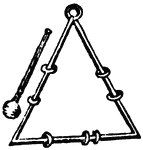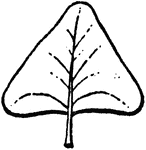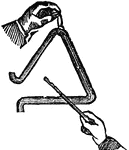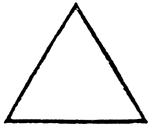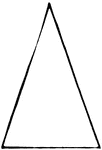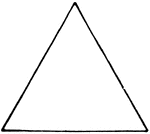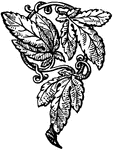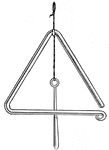
Triangle
A cylindrical steel bar, bent into a equilateral triangle. It is struck with a small bar of the same…
Spring Scales
Spring scales are used to weigh articles in which a high degree of exactness is not required. Spring…
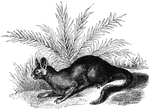
Cryptoprocta Ferox
"The only species, C. ferox, is but fifteen inches long, but its strength is great. Its disposition…
!["The Pen-Fish or Common Calamary, <em>L. vulgaris</em>, is the best-known species of the genus; the body is somewhat pellucid, of a greenish hue, changeable to dirty brown; the eyes are large and lustrous, of an emerald green, phosphoric, and fiery in a high degree. It is common in the european seas, and was known to the ancient Greeks and Romans. [Shown with a quill pen]" — Goodrich, 1859](https://etc.usf.edu/clipart/14000/14004/cmncalamari_14004_mth.gif)
Common calamari
"The Pen-Fish or Common Calamary, L. vulgaris, is the best-known species of the genus; the…

Hedgehog
"Hedgehog is a quadruped distinguished by having the body covered with spines instead of hair. The skin…

Ancile
"Ancilia carried by Salii. The sacred shield carried by the Salii, and made of bronze. The original…

Aplustre
"An ornament of wooden planks, which constituted the highest part of the poop of a ship. From the representations…
!["Starfish is a popular name for any individual of the family Asteridæ, a familiar object on the Atlantic coasts. The body is more or less star shaped, and consists of a central portion, or disk, surrounded by five or more lobes, or arms, radiating from the body and containing prolongations of the viscera. The mouth is situated in the center of the lower surface of the body, and the anus is either absent or on the upper surface. Locomotion is effected by means of peculiar tube-like processes, which are protruded from the under surface of the arms. They possess in a high degree the power of reproducing lost members and abound in all seas. [Pictured] Lesser Sand-star (Ophiura albida)"—(Charles Leonard-Stuart, 1911)](https://etc.usf.edu/clipart/16200/16266/starfish1_16266_mth.gif)
Lesser Sand-Star Starfish
"Starfish is a popular name for any individual of the family Asteridæ, a familiar object on the…
!["Starfish is a popular name for any individual of the family Asteridæ, a familiar object on the Atlantic coasts. The body is more or less star shaped, and consists of a central portion, or disk, surrounded by five or more lobes, or arms, radiating from the body and containing prolongations of the viscera. The mouth is situated in the center of the lower surface of the body, and the anus is either absent or on the upper surface. Locomotion is effected by means of peculiar tube-like processes, which are protruded from the under surface of the arms. They possess in a high degree the power of reproducing lost members and abound in all seas. [Pictured]Common Starfish, reproducing rays"—(Charles Leonard-Stuart, 1911)](https://etc.usf.edu/clipart/16200/16277/starfish2_16277_mth.gif)
Common Starfish
"Starfish is a popular name for any individual of the family Asteridæ, a familiar object on the…
!["Starfish is a popular name for any individual of the family Asteridæ, a familiar object on the Atlantic coasts. The body is more or less star shaped, and consists of a central portion, or disk, surrounded by five or more lobes, or arms, radiating from the body and containing prolongations of the viscera. The mouth is situated in the center of the lower surface of the body, and the anus is either absent or on the upper surface. Locomotion is effected by means of peculiar tube-like processes, which are protruded from the under surface of the arms. They possess in a high degree the power of reproducing lost members and abound in all seas. [Pictured]Common Starfish (Asterias rubens)"—(Charles Leonard-Stuart, 1911)](https://etc.usf.edu/clipart/16200/16278/starfish3_16278_mth.gif)
Common Starfish
"Starfish is a popular name for any individual of the family Asteridæ, a familiar object on the…
!["Starfish is a popular name for any individual of the family Asteridæ, a familiar object on the Atlantic coasts. The body is more or less star shaped, and consists of a central portion, or disk, surrounded by five or more lobes, or arms, radiating from the body and containing prolongations of the viscera. The mouth is situated in the center of the lower surface of the body, and the anus is either absent or on the upper surface. Locomotion is effected by means of peculiar tube-like processes, which are protruded from the under surface of the arms. They possess in a high degree the power of reproducing lost members and abound in all seas. [Pictured]Eyed Cribella (Cribella oculata)"—(Charles Leonard-Stuart, 1911)](https://etc.usf.edu/clipart/16200/16280/starfish4_16280_mth.gif)
Eyed Cribella Starfish
"Starfish is a popular name for any individual of the family Asteridæ, a familiar object on the…
!["Starfish is a popular name for any individual of the family Asteridæ, a familiar object on the Atlantic coasts. The body is more or less star shaped, and consists of a central portion, or disk, surrounded by five or more lobes, or arms, radiating from the body and containing prolongations of the viscera. The mouth is situated in the center of the lower surface of the body, and the anus is either absent or on the upper surface. Locomotion is effected by means of peculiar tube-like processes, which are protruded from the under surface of the arms. They possess in a high degree the power of reproducing lost members and abound in all seas. [Pictured]Gibbous Starlet (Asterina gibbosa)"—(Charles Leonard-Stuart, 1911)](https://etc.usf.edu/clipart/16200/16282/starfish5_16282_mth.gif)
Lesser Sand-star Starfish
"Starfish is a popular name for any individual of the family Asteridæ, a familiar object on the…

Fastigium
"An ancient Greek or Roman temple, of rectangular construction, is terminated at its upper extremity…
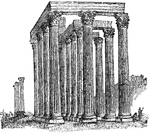
Temple of the Olympian Zeus
"Athens is said to have derrived its name from the prominence given to its worship of Athena by its…
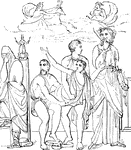
Sacrifice of Iphigenia
"The cut represents a painting from a wall at Pompeii, the subject of which is the sacrifice of Iphigenia,…
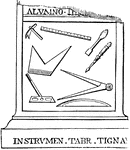
Norma
"A square used by carpenters, masons, and other artificers to make their work rectangular. It was made…
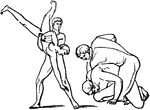
Pancratium
"An athletic game, in which all the powers of the fighter were called into action. The pancratium was…
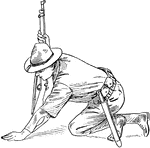
Lie Down
"Carry back the left foot and lie flat on the belly, inclining the body about 35 degree to the right."…

Lie Down
"Carry back the left foot and lie flat on the belly, inclining the body about 35 degree to the right."…
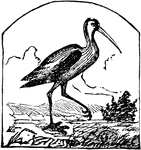
Ibis
A genus of wading birds, one species of which was regarded in ancient Egypt with a degree of respect…

Inclined Plane
"A force pushing a weight from C to D, only raises it through the perpendicular height, E D, by acting…

Triangular coop
"This triangular shape is a good one also for a movable poultry-house in its simplest form." —…
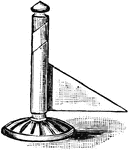
Diagram of a screw
"That the screw is a modified inclined plane, may be shown by winding a triangular piece of paper around…
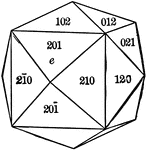
Tetrahexahedron
"The tetrahexahedron is a form composed of twenty-four isoceles triangular faces, each of which intersects…
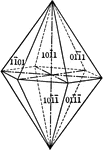
Pyramid of the first order
"This form consists of twelve isoceles triangular faces, each of which intersects two of the horizontal…
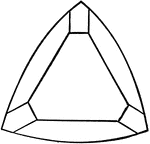
Tourmaline
"Hexagonal-rhombohedral; hemimorphic. Crystals usually prismatic, vertically striated. A triangular…
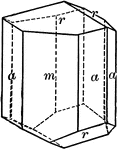
Tourmaline
"Hexagonal-rhombohedral; hemimorphic. Crystals usually prismatic, vertically striated. A triangular…
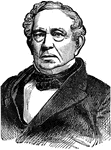
Edward Everette
"This distinguished American was born in 1794, at Dorchester, near Boston, Massachusetts, entered Harvard…

Right-Angled
A right-angled triangle is any triangle having one right angle. The side opposite the right angle is…
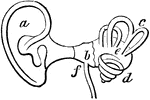
Ear
Interior of the ear. There is external to the head a wide-mouthed tube, or ear-trumpet (a), for catching…
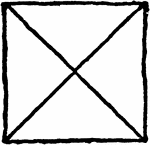
Solomon's Seal
Built on the right angle triangle and, like the Signet of David, it is found in many of the Turkish…
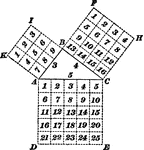
Right Triangle
"In any right triangle, the square described on the hypotenuse is equal to the sum of the squares described…

Pyramid
"If a pyramid be cut by a plane, parallel to the base, so as to form two parts, the lower part is called…

Cone
"If a cone be cut by a plane, parallel to the base, so as to form two parts, the lower part is called…

Compasses
"The compasses, next to the T square and triangles, are used more than any other instrument. A pencil…
Compasses
"The compasses, next to the T square and triangles, are used more than any other instrument. A pencil…
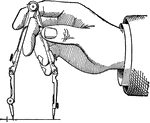
Compasses
"The compasses, next to the T square and triangles, are used more than any other instrument. A pencil…
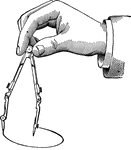
Compasses
"The compasses, next to the T square and triangles, are used more than any other instrument. A pencil…
Compasses
"The compasses, next to the T square and triangles, are used more than any other instrument. A pencil…
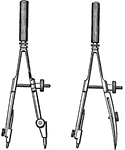
Compasses
"The compasses, next to the T square and triangles, are used more than any other instrument. A pencil…
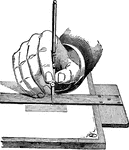
Ruling Pen
"For drawing ink lines other than arcs of circles, the ruling pen is used. It should be held as nearly…

Ruling Pen
"For drawing ink lines other than arcs of circles, the ruling pen is used. It should be held as nearly…

Protractor
"The outer edge is a semicircle, with center at 0, and is divided into 360 parts. Each division is one-half…

Croyland Bridge
"A strange triangular bridge at Croyland was probably built for or by a religious body. This structure…

Rheostat
An instrument for regulating or adjusting a circuit so that any required degree of resistance may be…
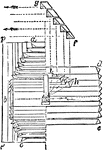
Condensing Octant
"Condensing Octant.—The central fixed apparatus bb with spherical mirror dd throws its rays directly…
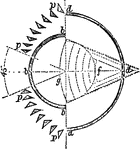
Condensing Octant
"Condensing Octant.—The central fixed apparatus bb with spherical mirror dd throws its rays directly…
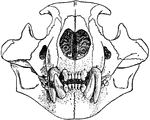
Lion Skull
"The internal structure of the lion, except in slight details, resembles that of the other Felidae,…
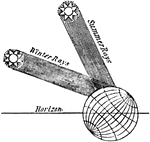
Rays
"Summer and Winter rays.—Let us suppose that the rays falling perpendicularly on a given extent…
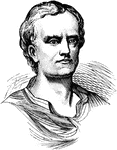
Caucasian
Caucasians typically have the lowest degree of projection of the alveolar bones which contain the teeth,…
